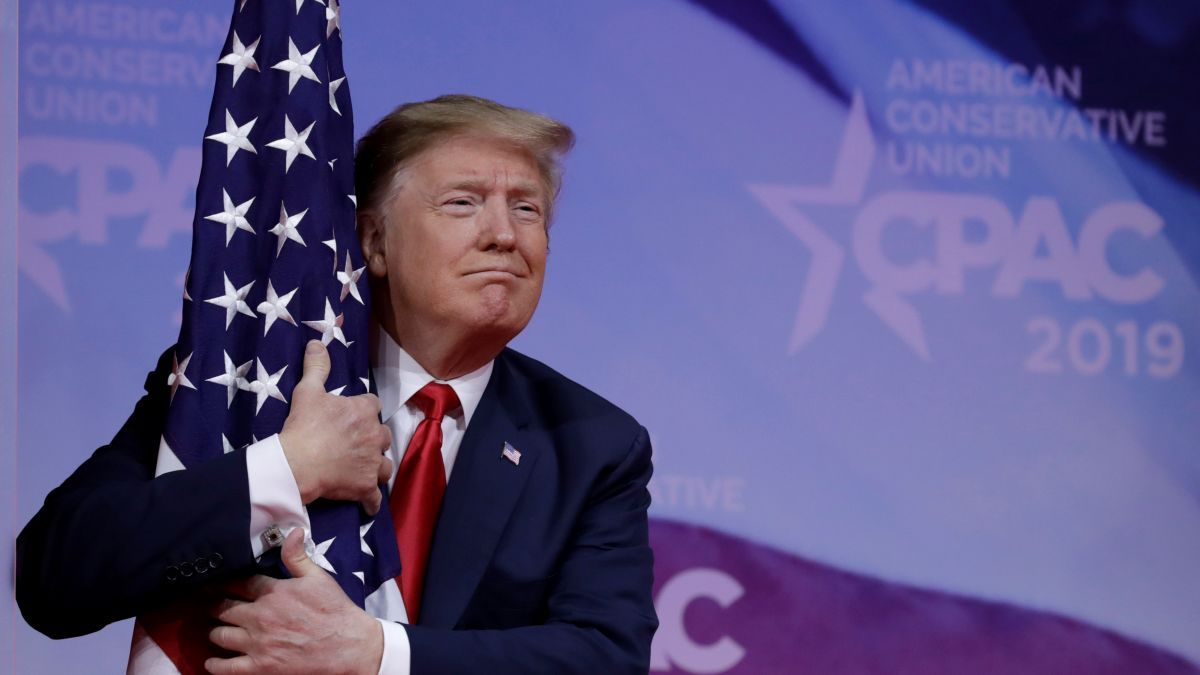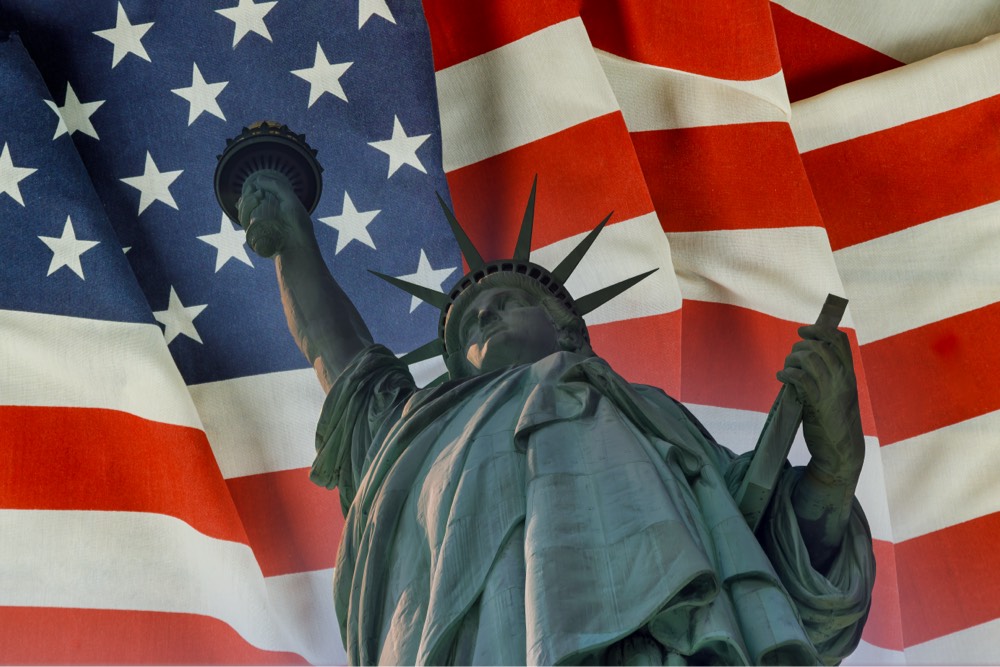*Published with the generous permission of Teri Kanefield. Read all of her writing here.
By Teri Kanefield

The accusation under 241 here is:
Trump did “knowingly conspire, confederate, and agree with co-conspirators, known and unknown to the Grand Jury, to injure, oppress, threaten, and intimidate one or more persons in the free exercise and enjoyment of a right and privilege secured to them by the Constitution and laws of the United States, that is, the right to vote, and to have one’s vote counted.”
Summary:
The indictment acknowledges that Trump had a free speech right to say what he wanted. Also, lying isn’t a crime. He is not being indicted for his speech. He is being indicted for conduct.
(Note: It is not a defense to these charges for him to say that he genuinely believed the election was stolen. A genuine belief that the election was stolen does not entitle him to break laws and use illegal means for setting it right. To put the matter in legal terms, the mens rea is that the defendant knowingly agreed to join the conspiracy whose object was to obstruct the lawful function of government.)
Six co-conspirators were listed in the indictment. They were not named, but the first 5 were easy to figure out:
Co-Conspirator 1= Rudy Giuliani
Co-Conspirator 2: John Eastman
Co-Conspirator 3: Sidney Powell
(She was described as an attorney whose unfounded claims of election fraud Trump privately acknowledged to others sounded “crazy.” Of course “sounded crazy” could have referred to dozens of people in Trump’s circle 😂 The reason for including the detail is that Trump knew the ideas were crazy and promoted them anyway.)
Co-Conspirator 4: Jeff Clark (A lawyer and DOJ official)
Co-Conspirator 5: Kenneth Chesebro (also a lawyer)
Co-Conspirator 6, a political consultant who helped with the fraudulent elector scheme. Appears to be Boris Epshteyn.
(It is likely these co-conspirators will be indicted later. My guess: The DOJ wanted to keep this indictment streamlined, and one charge wasn’t a conspiracy. Also, this indictment puts incredible pressure on the six co-conspirators.)
(Also notice that at least 5 of the 6 are lawyers and one is also a DOJ official. IF #6 is Epshteyn, that means all 6 were lawyers. 🤦♀️I guess there is a reason for all those lawyer jokes.)
The indictment next marches through the legal procedures for collecting, counting, and certifying votes under the Electoral Count Act and the Constitution. (The point is to show that Trump and his co-conspirators used illegal means to subvert the election.)
The indictment then explains the “fake elector” scheme for subverting the Electoral Count procedures. One plan was to get state legislators and officials to subvert the legitimate results and change electoral votes from Biden to Trump.
Trump and his co-conspirators drafted two memos that the DOJ is calling the “Fraudulent Elector Memo” and the “Fraudulent Elector Instructions.” These memos show how the idea of using fake electors developed. Lots of Trump campaign staffers made sure their names were not associated with the fake elector scheme.
How did the DOJ get these memos? Well, Trump’s chief of staff (Mark Meadows) forwarded the memo and wrote, “We just need to have someone coordinating the electors for states.” (Seems clear that Meadows handed this stuff over to the DOJ.)
The co-conspirators organized fraudulent slates of electors in 7 states (Arizona, Georgia, Michigan, Nevada, New Mexico, Pennsylvania, and Wisconsin) by mimicking the legitimate procedures followed by the real electors.
Some fraudulent electors were tricked by Guiliani into participating. Giuliani lied and told them that their electoral votes would be used only if Trump succeeded in outcome-determinative lawsuits within their state. (The inclusion that Giuliani tricked many of them is an interesting detail.)
The conspiracy included using the power of the DOJ to send letters to targeted states making false claims about election fraud.
Trump tried hard to get Pence to go along and use his ceremonial role during the January 6 proceedings to illegally throw the election to Trump.
When Pence refused, Trump gathered “supporters” and told them Pence had the authority to name Trump president and directed them to the Capitol to “obstruct” the January 6 proceedings to “exert pressure” on Pence.
As violence ensued, Trump and co-conspirators exploited the disruption by trying to persuade Members of Congress to further delay the certification based on those claims.
Lies, Lies, Lies
Trump was repeatedly notified that the lies he was spreading about election fraud were, in fact, lies. Among those who told Trump that none of the election fraud stuff was true were people he appointed and relied upon for candid advice including:
[The indictment offers specific examples of Trump making false claims and being told by these people that he was wrong.]
Next, we get a long list of the times Trump and co-conspirators called state officials and told them lies in order to get them to back Trump’s election fraud lies.
The indictment then marches through each lie (dozens for each state) that Trump told along with bits of dialogue that showed that Trump knew he was lying. An example:
In the call to Raffensperger (Georgia Secretary of State) on January 2, Raffensperger offered to send Trump a link to an actual video to show that the video he is using has been cut and spliced together. Trump said he didn’t need it because “I have a much better link.”
The facts emphasize that Trump attacked Republicans who didn’t go along with him. Example:
December 4, after four Republican leaders of the Pennsylvania legislature issued a public statement that the General Assembly lacked the authority to overturn the popular vote and appoint its own slate of electors and that doing so would violate the state Election Code and Constitution, Trump re-tweeted a post labeling the legislators cowards.
We get descriptions of phone calls like this:
On December 6, Trump and Eastman called the Chairwoman of the Republican National Committee to ensure that the plan was in motion. During the call, Eastman told the Chairwoman that it was important for the RNC to help Trump’s Campaign gather electors in targeted states, and falsely represented to her that such electors’ votes would be used only if ongoing litigation in one of the states changed the results in Trump’s favor. After the RNC Chairwoman consulted the Campaign and heard that work on gathering electors was underway, she called and reported this information to Trump, who responded approvingly.
(So, um, is RNC chairwoman testifying about this? How else does the DOJ know?)
On December 8, Chesebro called the Arizona attorney to urge him to get behind the plan.
(How did the DOJ learn about this? The helpful Arizona attorney commemorated the entire phone call in an email.) In his email, he included this summary of the plan: “The idea was to create confusion and let the members of Congress fight about it.” He didn’t think the plan was illegal. He thought it was creative.
(Note: Trump eventually vetoed this idea and wanted Pence to outright reject the electors instead of having the Congress people fight about it, which is sort of odd because I thought the reason to get them fighting was to delay the proceedings until Jan. 7.)
Then we have Giuliani filing a petition in SCOTUS solely to “provide cover” for convening the fake electors in Arizona.
Attempts to Weaponize the DOJ into Helping Trump Steal the Election
Clark had multiple meetings with Trump at the White House, which was against DOJ rules. He continued even after his superiors at the DOJ kept ordering him to stop.
He also kept trying to get his superiors at the DOJ to sign letters alleging fraud even though there wasn’t any fraud. The DOJ higher-ups continually refused. Clark threatened them, saying if they won’t go along, Trump will fire them and appoint Clark as AG.
The next morning, on December 27 Clark spoke with Trump on Trump’s cell phone for nearly three minutes.
(This evidence obviously came from phone records.)
Interesting moment
On January 1, Trump called Pence and berated him because Trump had learned that he opposed a lawsuit seeking a judicial decision that, at the certification, he had the authority to reject or return votes to the states under the Constitution.
Pence refused saying that there was no constitutional basis for such authority and that it was improper for him to try.
In response, Trump told the Vice President, “You’re too honest.”
On January 6: Trump told Pence that, because Pence won’t go along, Trump will have to “criticize” him in public.
(The tone struck me as: Sorry I have to do this to you buddy. I have to single you out and make you a target. His attitude was: Business as usual.)
Interesting detail
“On December 29, as reflected in the Vice President’s contemporaneous notes, the Defendant falsely told the Vice President that the “Justice Dept [was] finding major infractions.”
(So, Pence was taking “contemporaneous notes” ??? This is called CYA)
The indictment mentions that many of the people who stormed the Capitol on January 6 were tricked by Trump’s lies.
The fact that so many of these defendants actually said this under oath will help the prosecutor’s case.
The indictment stops short of accusing Trump of “inciting” the violence at the Capitol on January 6. Instead, the indictment alleges that he “exploited” the violence at the Capitol.
A Hint of Violence #1:
The Deputy White House Counsel said if Trump remained in the White House [after January 20] there would be “riots in every major city in the United States.” Clark responded by saying, “That’s why there’s an Insurrection Act.”
In other words, Clark’s idea is that Trump just refuses to leave the White House then invokes the Insurrection Act and uses the military to put a stop to the riots.
That is chilling.
A Hint of Violence #2:
January 4, when Eastman acknowledged to Trump’s Senior Advisor that no court would support his proposal, the Senior Advisor told Eastman, “[Y]ou’re going to cause riots in the streets.” Eastman said there had “previously been points in the nation’s history where violence was necessary to protect the republic.”
Thus the plan seemed to be:
I am not saying this would have worked. I’m saying this was the plan.
Here is an example of how Trump writes the script and expects everyone to play their parts:
January 5: Trump met alone with Pence. Pence refused to go along. Trump, frustrated, said he’d have to “publicly criticize him.”
January 5 (night): Trump had his campaign release a statement that “The Vice President and I are in total agreement that the Vice President has the power to act.”
My conclusion: This is a very strong, careful indictment alleging facts that can be proven while bypassing the waters that can be muddied.
So as you can see, Marco Rubio and others are straight-up lying when they say Trump is being indicted for saying the election was stolen and challenging the election results.
At this point, it seems like Trump’s defense, put forward by his lawyers, will be “He believed everything he said was true.” Setting aside the fact that there is clear evidence that he knew he was lying, this would not be a defense to the charges, so it will not help him legally. But, as he has been doing from the beginning, he is putting his political needs ahead of his needs as a criminal defendant.
I would guess his reasoning is that he will lose the case and be convicted, so he may as well hold on to his grip on the Republican Party.
So I guess we have more Trump indictments coming?



